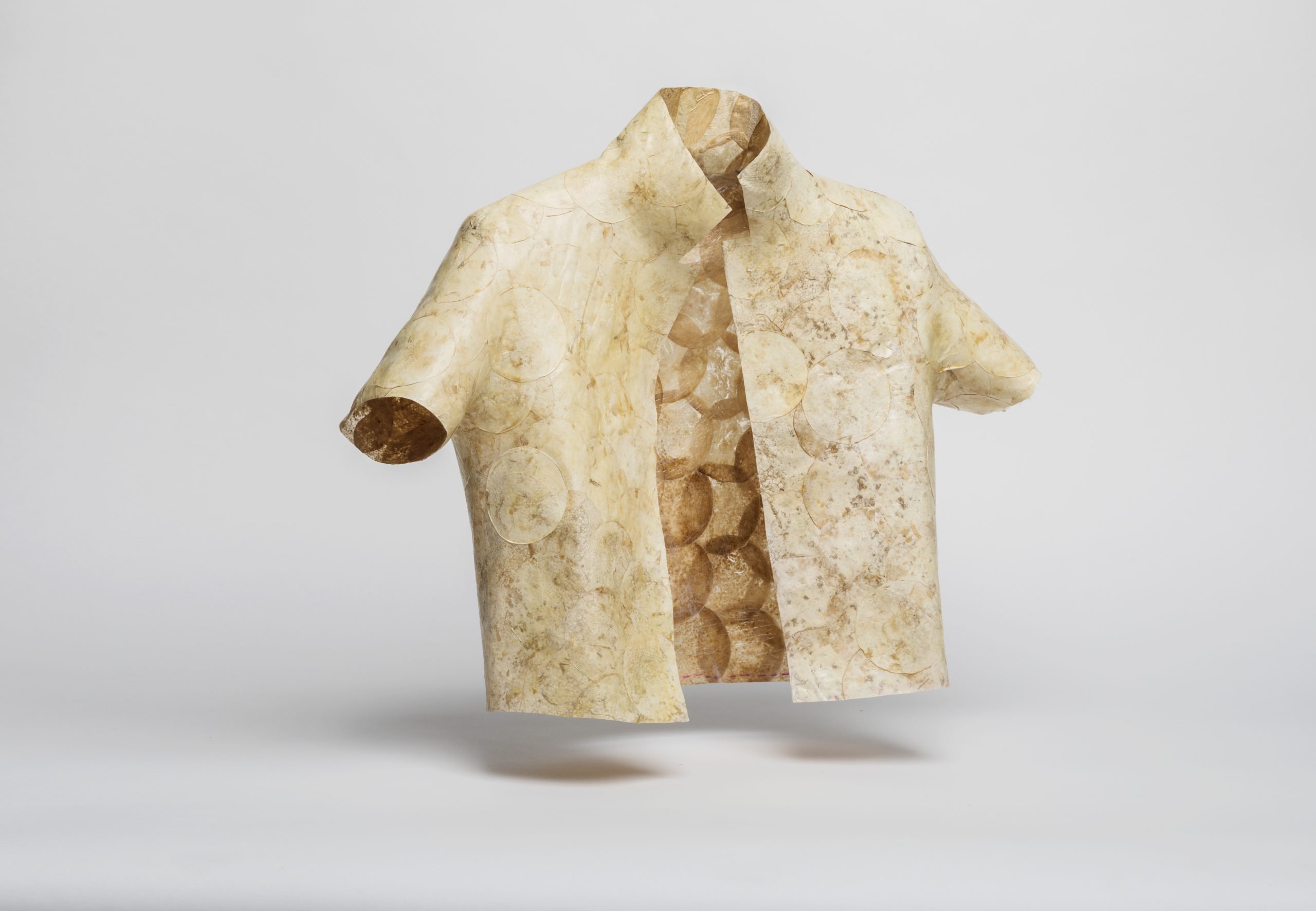
Most people wear fast fashion, or relatively cheap clothes, that they throw away after one or two years. If we lived in an ideal world, they would change their behavior in the current climate crisis. They would wear their clothes longer because it is more sustainable than fast consumption. But our world is not ideal, says Aniela Hoitink, founder of the Dutch start-up NEFFA:
“Our wasteful way of life began centuries ago. Events that accelerated this were the expansion of trade in the 16th century and the industrial revolution in the 19th century. We like to accumulate things because they express our personal style and success. That is why we need solutions that correspond to the reality in which we live.”
The tissue she grows from mycelium (fungal root) is inexpensive and can be composted after use – simply by burying it in the earth. It should enable consumers to follow trends and still live sustainably.
Mycelium
The fashion industry is both resource and labor intensive. Just think of cotton cultivation, which consumes valuable arable land and water resources and uses pesticides and chemicals. In Hoitink’s production process, material and model are created in one step: the fabric is formed by fermentation and is grown directly on a three-dimensional body shape. The properties of mycelium are comparable to those of leather or plastic. It could replace environmentally harmful petroleum-based synthetic fibers, such as those used for bags or weatherproof jackets.
Closed cycle
Mycelium is a multicellular yeast cell that typically feeds on small sugar molecules from wood or plant waste. It grows by producing small molecules that it precisely assembles, creating a dense network of fibers. Once this is complete, the mycelium goes on to form a fungus. In this phase, humans can intervene and direct the growth of the tissue by controlling temperature, CO2, humidity and airflow. The process is rapid and takes place within a few days.
Also interesting: A three-dimensional approach could revolutionize fashion production
The mycelium yeast cell feeds on sugar molecules from post-consumer waste, such as corn cobs, wood chips and straw. In the production process, these materials are recycled and transformed into environmentally friendly products. The production of tissue from mycelium thus represents a closed cycle.

Simplified supply chain
There is already a small tradition in the production of new tissue from mycelium. The first trials started in 2012, with major research projects focusing on imitation leather and relying on a supply chain that has a 200-year tradition, explains Hoitink.
She herself has been researching the use of mycelium in fashion production since 2014. At that time she became part of a research project at the University of Utrecht. The name of her start-up NEFFA is an acronym of Net effe anders, which translates as “doing things differently.” This approach is reflected, among other things, in the way she borrows ideas from other industries and applies them to fashion production. She has thus been able to rethink and shorten the supply chain dramatically. She developed a production technique that does without seams and allows personalization in mass production.
The production process, i.e., the entire supply chain, consists of two steps: In the first step, the raw biomass is grown in large fermenters. This is a process that is already established at large companies like BASF and DSM, explains Hoitink. In the second step, the product is processed and, depending on requirements, dyed and coated.
Local production
Since the clothing is grown on the body shape and according to plan, there is no waste. Cutting and sewing work is not necessary. This means that labor intensity is reduced and this enables cost-effective local production. Long transport routes are eliminated and the ecological footprint shrinks.
At the same time, overproduction is avoided because production is made to order, according to the body measurements of the customer. Consumers have the advantage of well-fitting clothing that is easy to care for. The fabric can be easily cleaned by wiping it with a damp cloth.

Marketing
Hoitink’s concept has received great recognition. Most recently, she was one of ten finalists in the Social Innovation Competition 2020, which ran under the title Reimagine Fashion. In the online academy and coaching she was able to sharpen her ideas around the systemic change she wants to achieve with her product MycoTEX. Says Hoitink: “Natural materials offer various natural functions. With Mycelium, we are bringing more diversity to a society that essentially relies on cotton and polyester.”
She is currently working on scaling up production, which should be possible in large quantities. The first product will be on the market in 2021. Marketing is to be carried out business-to-business via online platforms such as Yoox and Zalando.
At the launch, the technology will still be based on standard sizes. In the long term, however, personalization should be possible by the customer’s uploading their body scan. The body shapes on which the tissue grows can be flexibly adapted to customer measurements.
Hoitink also wants to improve the material properties. The mycelium fabric is similar to leather and plastic, two types of material that are not particularly breathable. This will change with MycoTex.
Also interesting:
Foundry solves the problems of the fashion industry with technology
